
In 1945, Australia's first minister for immigration, Arthur Calwell, sought to increase Australia's post-war productivity through a migration scheme that brought refugees from war-torn Europe. From 1947 to 1953 approximately 170,000 displaced persons (known as DPs) from around Europe were brought to Australia. The first ship arrived in 1947 with refugees from the Baltic States and over the next six years non-British migrants, many from eastern and southern Europe, arrived on a fleet of refugee ships requisitioned for the purpose.
Many came with few possessions, but the items they did bring were important reminders of past experiences and connections to place and culture. The individual stories of these objects bring a very personal and human face to the larger world histories of upheaval and displacement.
The Brighton Historical Society has a number of discrete collections that relate to the migration stories of families who settled in the area in the twentieth century. One such collection is the Gouttman/Frisch collection of clothing and accessories that belonged to two Jewish families, who became related by marriage when Maria Frisch's daughter Anne married Ida Gouttman's son Rodney in Australia.
After a six week voyage from Genoa on the SS Napoli, Maria and her nine year old daughter Anne disembarked in Melbourne in October 1948. They were Holocaust survivors from Poland and had waited three years in Italy for their documents to arrive that granted them entry into Australia. On the ship's passenger list, mother and daughter are recorded at 220 and 221 as Maria and Anna Entemberg, their surname Entenberg having been misspelled.
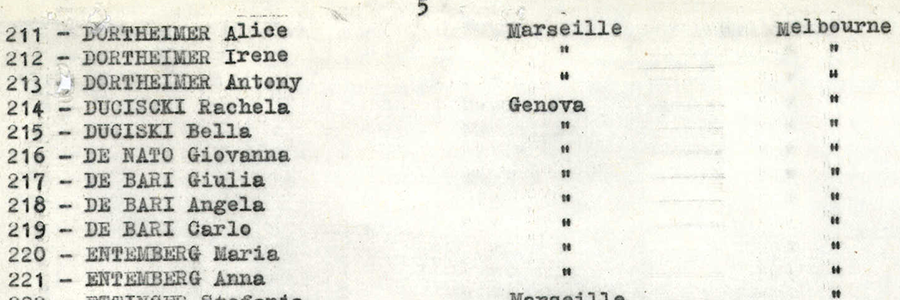 |
|
Passenger list for S. S. Napoli, 15 October 1948. National Archives of Australia. |
As a small child Anne had been smuggled out of the Krakow ghetto in 1942 and survived the war in the care of a Polish woman. Anne's parents were deported to concentration camps and her father had perished in Mauthausen. Maria survived numerous camps and at the end of the war mother and daughter were reunited in Krakow and sought refuge in Italy where Maria's sister Ida had lived in Florence since the 1930s.
 |
|
Maria and daughter Anne in Florence, c.1947. Courtesy Anne Gouttman. |
Among the items that Maria brought with her was a pair of black suede gloves embroidered with pink rosebuds, which had been purchased in Italy in about 1948. Tacked together and still in their pristine state, they were stored with the glove shop's paper bag, printed with the address in Florence. Why they remained unused can only be guessed at (perhaps they were a treasured gift from her sister, too precious to wear) but for decades they were kept together, along with the two artificial pearl collars which Maria made soon after her arrival in Melbourne, until they were donated to the Brighton Historical Society by Anne in 2005.
 |
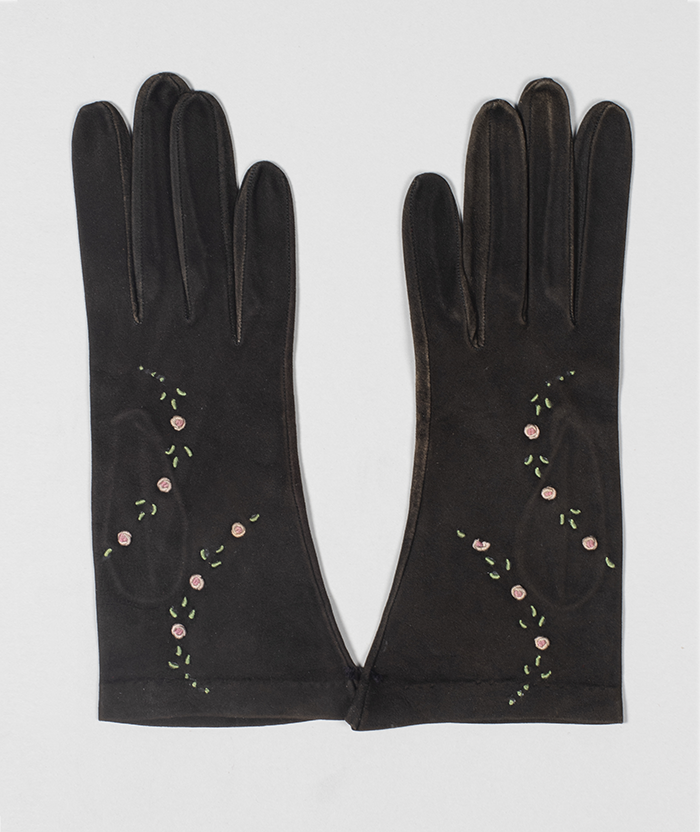 |
Maria Pia Niccolini, Florence |
As emigrants, Maria and Anne were sponsored by a Polish woman, Mrs Rosa Zerfas, a successful businesswoman who lived in Brighton. Although they did not know one another beforehand, Anne recounted in 2007 how Mrs Zerfas, who became known as 'Aunty Rosa', gave them initial refuge and a quiet haven in her Martin Street home. Speaking no English, Anne attended St Kilda Park State School where there was an English language class that catered for newly arrived migrant children.
Rosa found Maria a job in one of her businesses, Grosvenor Hats. In the late 1940s and 1950s the business, which was at 109 Russell Street, Melbourne, regularly advertised for staff, including experienced model and table hands. In pre-war Poland Maria, who had lived in Krakow, was a kindergarten teacher. Arriving in Melbourne with no English, Maria undertook work as a machinist in the hat factory where she was taught on the job.
Australia's small local fashion industry was enhanced by the flow of skilled pre- and post-WWII migrants, may of who were employed in Melbourne's manufacturing and wholesale workrooms in Flinders Lane. The paste pearl necklaces made by Maria are indicative of the type of detailed work that milliners produced in the creation of wedding headpieces. Maria learned the craft of pearl threading and, on leaving Grosvenor Hats, she was able to support herself and Anne by working from home, threading jewellery for numerous Melbourne jewellers.
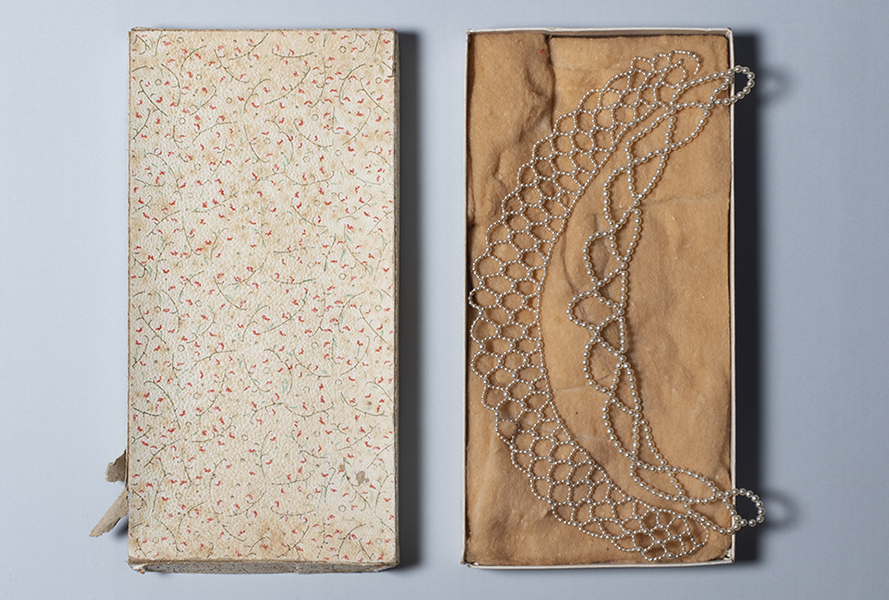 |
 |
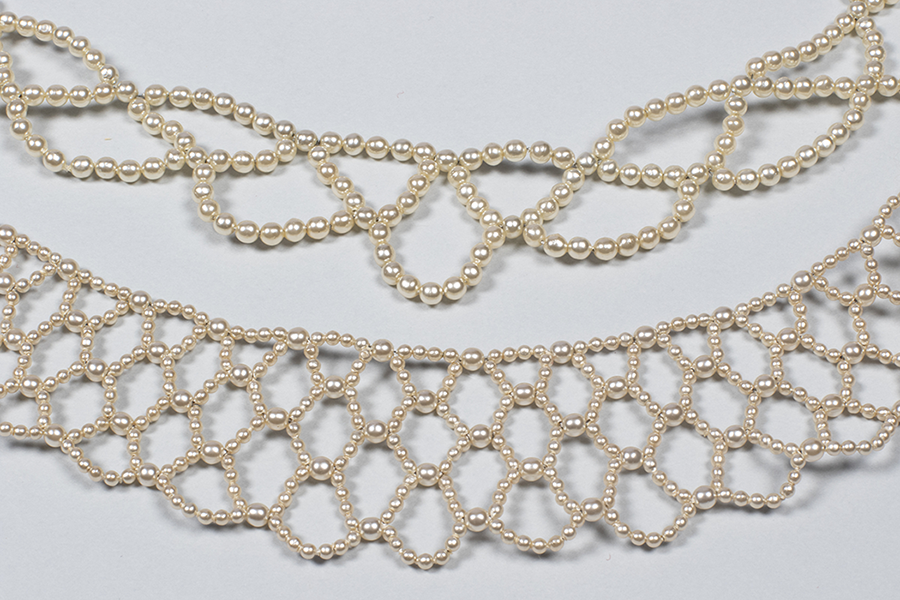 |
Maria Frisch, Melbourne |
In 1952 Maria married Jack (Jakob) Frisch who had had emigrated to Australia on the same ship. He was also from Krakow and had survived the war in Soviet labour camps. However, his wife and small daughter had died at the hands of the Nazis. Maria had suffered health-wise due to the deprivations of the concentration camps and she died in Melbourne in 1976 at the age of 65.
A number of items from the Gouttman family were also donated to the Brighton Historical Society by Brighton resident and Historical Society volunteer Ida Gouttman, who was Anne's mother-in-law. This large blue silk shawl with reversible woven metallic thread floral pattern and deep fringing, circa 1928, was worn by Ida's mother, Rose Caplan.
 |
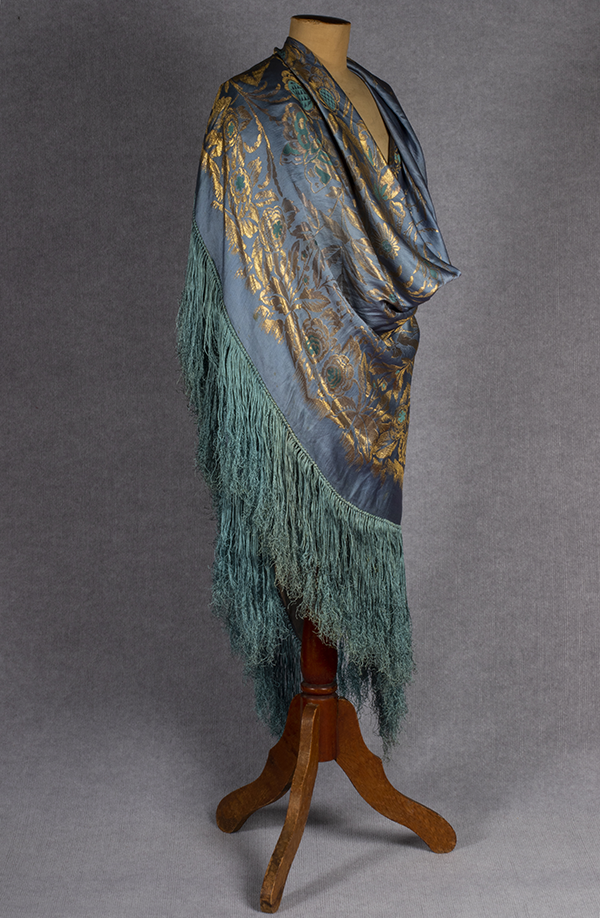 |
 |
|
(Europe), Shawl, c. 1928 |
||
Immigration records show that Morris and Rose (Rosa) Caplan emigrated to Australia from England in 1910 on the Orsova. Although Morris and Rose are listed as being Russian, photographs of the couple taken in England in 1908 suggest they had been resident there for a number of years. Many Jews fled Russia during the pogroms of the late nineteenth and early twentieth century and this may have been the reason for Morris and Rose's migration. Morris was recorded as a tailor by occupation, however in Australia he eventually became a Director of the General Rubber Co. Ltd, Sydney.
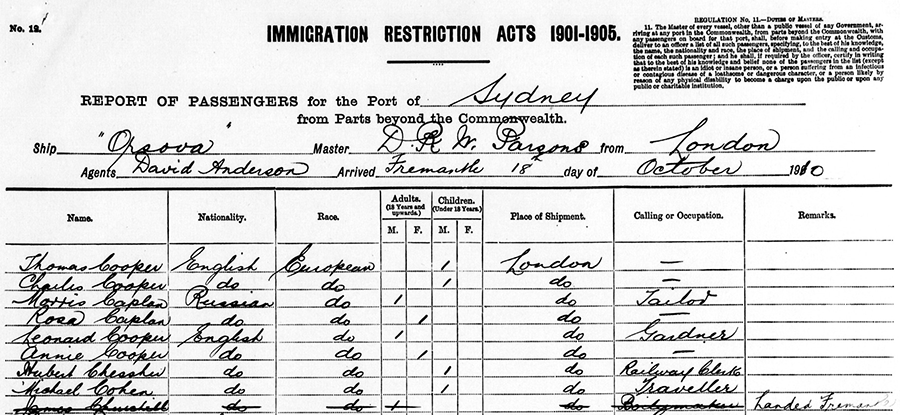 |
|
Passenger list for the Orsova, 1910. National Archives of Australia. |
Tragically, Rose died from a sudden illness in 1928 while she and her husband were travelling in Europe and had just visited her father in Latvia. Rose was buried in Berlin. It is poignant to reflect that this 1920s shawl, although it could have been imported and bought in Australia, may have been purchased during this trip to Europe.
Rose and Morris' daughter Ida, who had kept the shawl, married Leon Gouttman in Sydney in 1938. By then the young Ida, who was born in Sydney in 1915, had lost both her parents, with her father dying in Melbourne in 1933. Suddenly finding herself in difficult financial circumstances, Ida was unable to continue her studies in commerce at the University of Melbourne and instead found work in the garment trade in Flinders Lane. When she married Leon, the couple set up home in Sydney and Ida remained there until she was 87 when she returned to Melbourne to live close to her son, Rodney, daughter-in-law Anne and grandchild Sonia. In 2005 Ida donated her mother's shawl to the Brighton Historical Society, where she was an active member.
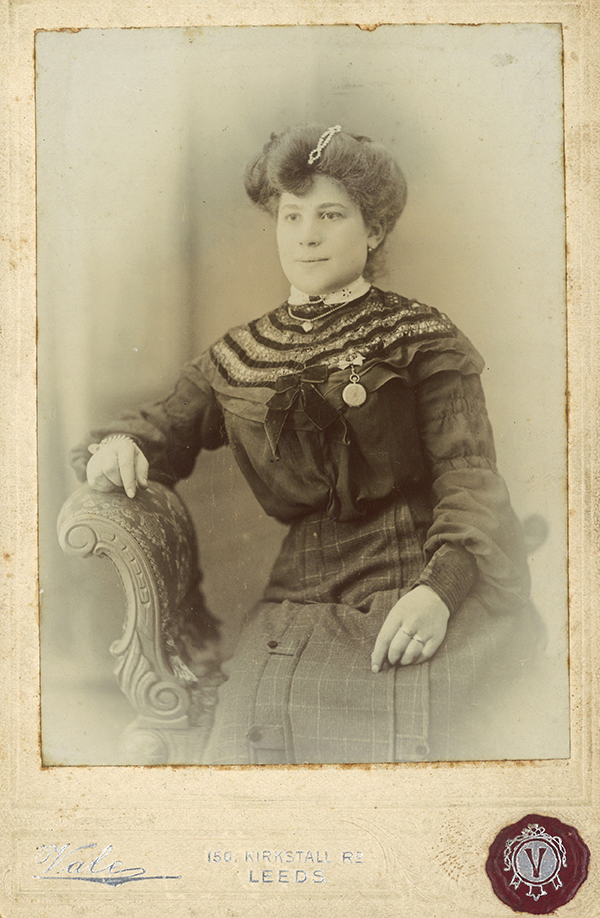 |
 |
Left: Rose Caplan in Leeds, England, 1909. Courtesy Gouttman family. Right: Rose Caplan with her daughter Ida, 1921. Courtesy Gouttman family. |
Laura Jocic, 2019
Page design by Jessica Curtain
References
Brighton Historical Society, Acquisition notes for Gouttman and Frisch donations, 2005.
Gouttman, Anne, "A soft landing in Brighton", Brighton Historical Society Journal, no. 140, Autumn 2007, pp. 7-8.
Gouttman, Anne, 'Poets' Corner' 1949-1953: Recollections of an Immigrant Childhood, unpublished.
Gouttman, Anne, personal communication with Laura Jocic, 3 October 2019.
Gouttman, Rod, Eulogy for Ida Gouttman, 2008. On file at Brighton Historical Society.
Hebrew Standard of Australasia, 14 Dec 1928, p. 5. Announcement of Rose Caplan's death.
Kunz, Egon F., Displaced Persons: Calwell's New Australians, Australian National University Press, Sydney, 1988.
Macintyre, Stuart, A Concise History of Australia, 3rd edition, Cambridge University Press, Melbourne, 2009.
National Archives of Australia, Passenger Arrivals; Record for Orsova, 18 October 1910. K269.
National Archives of Australia, Passenger Arrivals; Record for S. S. Napoli, 15 October 1948. K269.
New South Wales Registry of Births, Deaths & Marriages.
Acknowledgements
Thanks to Anne Gouttman for sharing her memoir of her life as an immigrant child in Australia.
This research was funded by a Local History Grant from Public Record Office Victoria.
Brighton Historical Society Costume Collection Project, 2018-2019.
